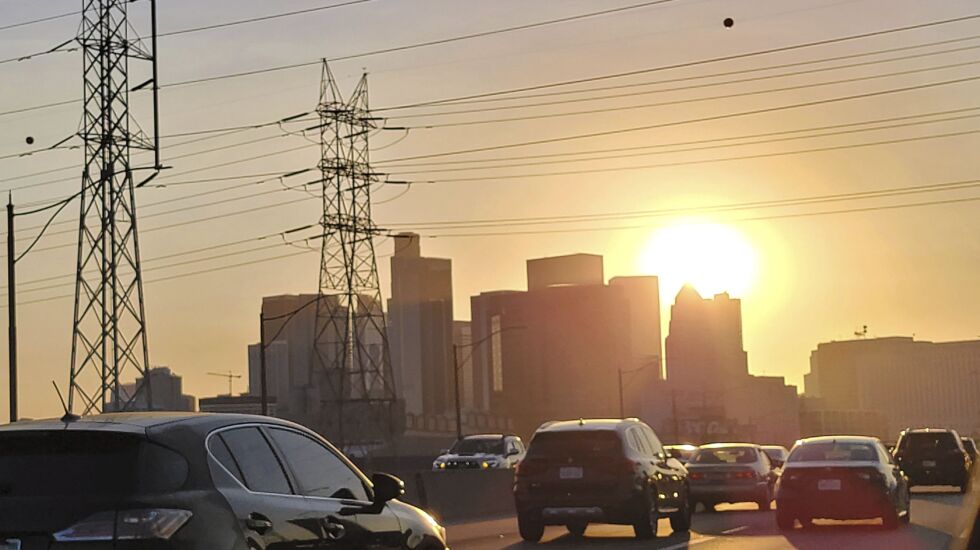
SACRAMENTO, Calif. — A record heat wave has put California in a fossil fuel conundrum:
The state has had to rely more heavily on natural gas to produce electricity and avoid power outages even as Gov. Gavin Newsom’s administration moves toward ending the use of oil and gas.
The heat wave that started more than a week ago has been hotter and longer than any other in the state, and it put unprecedented strain on power supplies. That prompted Newsom to plead with people to use less power to avoid rolling blackouts — cutting some people’s power to save energy so the lights can stay on for everyone else.
The effort worked, but meeting the state’s heightened energy demand required activating generators fueled by natural gas, which is still a major part of California’s power picture.
The Democratic governor’s calls for conservation drew criticism about new state policies governing electric vehicles and other measures that will only increase energy demand.
Newsom said the “pretty extreme” circumstances required the state to turn to more natural gas as a backup supply.
“We all want to accelerate the elimination of the gas, but it’s a sober reminder of reality,” he said.
Demand will only climb in the years ahead. By 2045, when the state is mandated to get all of its electricity from non-carbon or renewable sources, demand is expected to be as high as 78,000 megawatts due to more electric home appliances and cars on the road, according to California Energy Commission estimates.
To meet that demand, the government and major utilities like Pacific Gas & Electric are working to scale up renewable sources such as solar and wind power as well as large-scale batteries that can store that power for use at night. The California Public Utilities Commission last year ordered utilities to procure enough additional power for 2.5 million homes by 2026.
Newsom just signed legislation aimed at keeping the state’s last nuclear plant open for five years beyond its planned 2025 closure, and he suggested that the plant could run even longer if needed.
The sun typically is the state’s biggest power source during the day. But, as the hot weather arrived, natural gas has surpassed renewables for more time recently, according to the California Independent System Operator, which is responsible for managing and maintaining reliability on the state’s power grid.
Gas was the primary energy source all day on Tuesday — the expected peak of the brutal temperatures.
On Monday, the state for the first time turned on four gas-powered generators to add more supply, enough to power 120,000 homes. It planned to rely on some diesel-powered generators as well.
But some of the state’s fossil-fuel plants have their own reliability problems. Several power plants, including aging gas-fired ones along California’s coast, partially broke down or produced less energy than planned, according to the ISO.
Four of the plants, which suck up ocean water to cool down their equipment, were slated to close in 2020, but the state has continually extended their lives to help stabilize the power supply. They now plan to stay open until at least 2023, but they could last even longer under legislation Newsom signed in June.
If the state wants to keep the old coastal gas-powered plants online beyond 2023, it needs to give the companies that own them more certainty about the future so they can decide whether to spend money to maintain them, said Siva Gunda, vice chairman of the California Energy Commission.
“Everything has to be moved forward at full throttle” with the “ambitious aim” that cleaner energy sources make up most of the state’s power reserves, Gunda said.
The intensity of the heat wave highlights the need for California to move away from fossil fuels as quickly as possible, he said.
The grid challenges also provided plenty of fodder for Newsom’s critics, who have argued that Democrats’ policies to move away from oil and gas don’t add up.
The state recently adopted new regulations aimed at ending the sale of most new gas-powered cars in the state by 2035. But, during the heat wave, officials also urged people not to charge cars or use other large appliances at night. The state hasn’t banned car charging but urged people to do so during the day.
California needs to set clearer goals to meet its clean energy targets and ensure that fossil fuels aren’t used as a backup, said Ari Eisenstadt of Regenerate California, a campaign aimed at ending fossil fuel use in the state.
“Folks have been talking about natural gas as a bridge for decades,” Eisenstadt said. “And if it were truly a bridge, we would have crossed it by now.”







